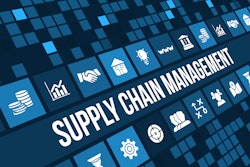
The last few years have increasingly exposed the fragility of supply chains. From natural disasters, geopolitical conflicts, regulatory changes, and cyberattacks, we have seen a bevy of complex and interrelated geopolitical disruptions causing havoc on global supply chains. These escalating geopolitical challenges are creating a “new normal” — a near-constant state of crisis.
Just as supply chain pros were recovering from the pandemic supply chain disruptions, significant global conflicts emerged, presenting even bigger challenges — first with the prolonged Ukraine-Russia war and now with the Israel-Hamas war.
As one reporter put it: If the pandemic crippled the global supply chain, the war in Ukraine knocked it to its knees.
While war zones create resource and route access issues, and they have a dual effect of creating quantity and price constraints, there are other factors at play. Widespread global supply chains are presenting themselves as the new economic weapons in these conflicts. Governments and non-state actors across the globe, understanding myriad supply chain vulnerabilities, are now exploiting these weaknesses as tools of power and influence. Tariffs, sanctions and even disinformation campaigns are being applied with surgical precision. This phenomenon has been referred to as economic statecraft, or “wars without gun smoke.”
This has brought to the forefront a new and important topic for supply and demand chain executives — contested logistics.
Contested logistics is the intentional targeting of logistics operations, infrastructure, facilities and supply chains by adversarial actors to gain geopolitical or economic leverage. Key players such as Russia, China, Iran, and North Korea have actively weaponized logistics to erode Western influence and limit access to critical resources.
In 2024, the world learned of a Houthi campaign of attacks against civilian vessels in the Red Sea. The Houthi campaign illustrated constraints by a political actor against commercial actors in pursuit of a political outcome.
Other recent examples of contested logistics include:
· Russia’s Arctic Ambitions: State-owned entities, such Rosatom, play a pivotal role in advancing Russia’s strategic interests in the Arctic — a prominent region for shipping routes and natural resources. Monitoring these activities reveals broader geopolitical intentions and vulnerabilities.
· The Panama Canal: A chokepoint of global trade, the Panama Canal has seen an increased presence of Chinese companies. Tracking investments and activities in this region is vital to understanding potential leverage points.
· Global Shadow Fleets: Shipping networks used to circumvent sanctions and economic countermeasures illustrate how adversaries are upending global trade norms.
Supply and demand chain executives recognize the implications of this are far-reaching: in the form of delayed deliveries, increased costs, vulnerabilities, and eroded trust in key industries. This is necessitating new approaches to bring greater resiliency and risk mitigation into supply chain operations.
Forging next-generation risk mitigation strategies
Supply chain risk and contested logistics are interdependent – supply chain vulnerabilities create opportunities for adversaries to disrupt logistics, while effective risk mitigation strategies enhance resilience in contested environments.
The ripple effects of contested logistics touch nearly every industry. Hyperscalers, semiconductors, rare earth minerals, and energy infrastructure are not only essential to the global economy but are also key targets for supply chain disruption. Understanding the interconnectedness of your supply chain operations and these sectors is essential to crafting effective mitigation strategies.
The traditional approach to supply chain management — prioritizing efficiency over resilience — has proven inadequate in addressing modern challenges. To adapt, organizations must rethink strategies, moving from reactive problem-solving to proactive risk mitigation. Organizations must leverage advanced analytics, continuous monitoring, and real-time vendor risk assessments to safeguard supply chains and ensure operational effectiveness against adversarial actions. One powerful tool at the forefront of this shift is open-source intelligence (OSINT). By leveraging publicly available data, OSINT provides unparalleled visibility into potential disruptions, adversarial actions, and hidden vulnerabilities.
The role of OSINT in supply chain resilience
OSINT provides the tools needed to navigate this complex landscape. By aggregating and analyzing publicly available data, OSINT enables organizations to detect and mitigate risks in real time.
Below is an overview of key capabilities:
· Monitoring real-time disruptions: OSINT platforms can identify emerging threats, such as labor strikes, natural disasters, or geopolitical instability, providing early warnings to stakeholders.
· Tracking vendor ecosystems: By illuminating the web of relationships between vendors, OSINT helps identify vulnerabilities, including connections to adversarial entities or non-compliant suppliers.
· Exposing illicit networks: From shadow fleets to counterfeit goods, OSINT uncovers hidden activities that undermine global trade norms.
Best practices
Success in our new world of contested logistics requires a clear strategy, long-term commitment, and the ability to adapt to evolving challenges. This is ushering in a new wave of investment and application of advanced analytics and OSINT platforms to stay ahead of potential disruptions and create a more resilient global supply network.


















